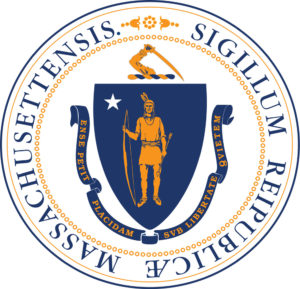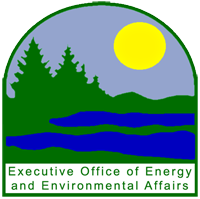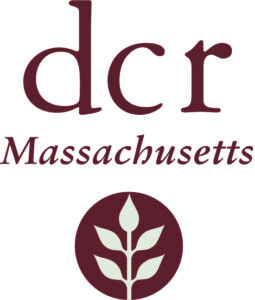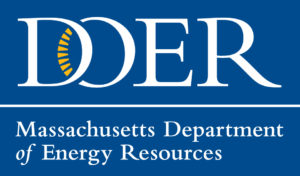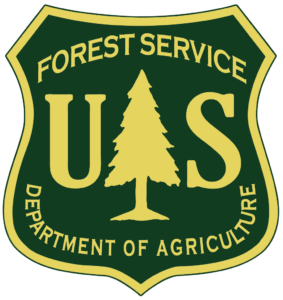RESIDENTS AND BUSINESS OWNERS CAN ORDER FREE TREES TO BE PLANTED ON THEIR PROPERTIES
Greening the Gateway Cities Program provides free trees to increase tree canopy cover in select urban residential areas.
How would you like some free trees to beautify your yard and your neighborhood? Residents and business owners can order free trees to be planted on their properties, as part of the Greening the Gateway Cities Program (GGCP). The program was created with a goal to increase the number of trees planted in urban residential areas of the Massachusetts Gateway Cities. It’s also designed to reduce household heating and cooling energy use by increasing tree canopy cover in urban residential areas, while improving the aesthetic appearance of these neighborhoods.
Through the GGCP program, trees (ranging from 6ft to 10ft tall) are planted with a goal of covering 5% of target neighborhoods in new tree canopy cover. The trees are planted by foresters from the Department of Conservation & Recreation (DCR) Urban & Community Forestry Program, with crews hired from local communities.
To be eligible for this program’s benefits, residents and property owners must agree to a two-year watering commitment, to ensure the trees’ survival. Easy care instructions are provided by the DCR to tree recipients addressing watering, mulching and pruning. When a potential tree recipient signs up, a DCR forester will visit their home to determine the best location and species of tree for energy efficiency. Foresters also conduct year-round site visits and are available to answer questions.
The GGCP targets the parts of the city with lower tree canopy, older housing stock, higher wind speeds, and larger renter populations. In addition, plantings are concentrated in Environmental Justice neighborhoods, to benefit those most in need. Within planted areas, temperature, energy use, and other information is tracked to document the energy savings new trees provide to residents over time.
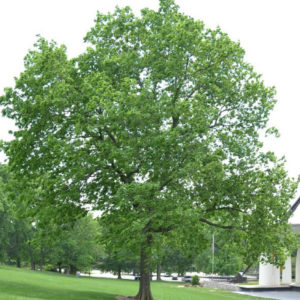
There are many benefits to increasing neighborhood level tree canopy cover:
Trees near a home directly shade structures, significantly lowering surface temperatures, while trees up to 1,500 feet away from a home still provide a benefit. Program goals are to plant 5 trees per acre, which will reduce the Urban Heat Island effect, and decrease summer air temperatures in city neighborhoods by shading and increased transpiration (the process in which plants absorb water through the roots and then give off water vapor through the pores in their leaves). Additionally, in the winter months, mature tree trunks and branches help to randomize wind patterns and decrease heat loss by air infiltration in poorly insulated homes.
In high-density urban neighborhoods, planting an average of 5 trees per acre (roughly one third of a block) will provide benefits to 15-25 households, depending on building density. Most trees are planted in yards where they grow quickly with the care provided by residents. Planting this number of trees will increase canopy by an estimated 1% in eight years and 5% in 30 years. Return on investment is realized as soon as 15 years, after which additional energy savings are realized for the life of the trees.
Beyond energy savings, other benefits of large-scale urban plantings include local employment and economic activity. Tree planting is the only energy efficiency program where almost all of the investments stay in the local economy by the hiring of local planting crews and growing trees at local nurseries.
A healthy urban forest ecosystem improves the quality of the water we drink, the air we breathe, the stability of our neighborhoods, and our sense of community and individual pride.
To order a free tree, property owners and residents should call the number for your city on the right.
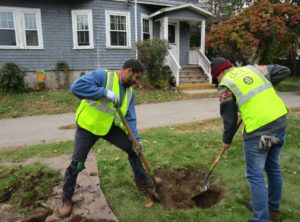
About the Greening the Gateway Cities Program:
The GGCP is a partnership between the Executive Office of Energy and Environmental Affairs (EEA), the Department of Conservation and Recreation (DCR) Urban & Community Forestry Program, the Department of Energy Resources (DOER) and the Department of Housing and Community Development (DHCD), along with Massachusetts Gateway Cities and local nonprofit organizations.
Funded by the EEA and by DOER’s Alternative Compliance Payment program, the GGCP is administered by the DCR Bureau of Forestry.
